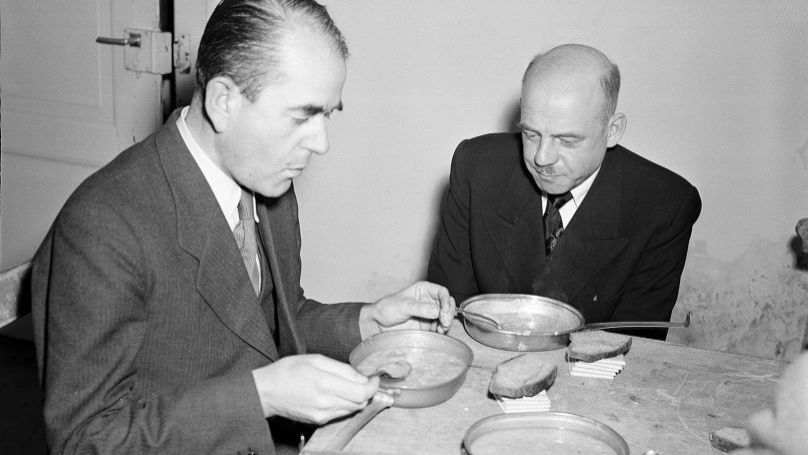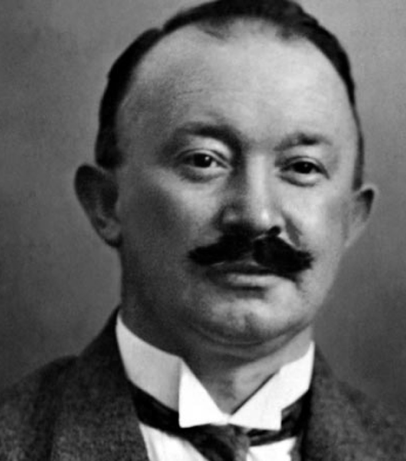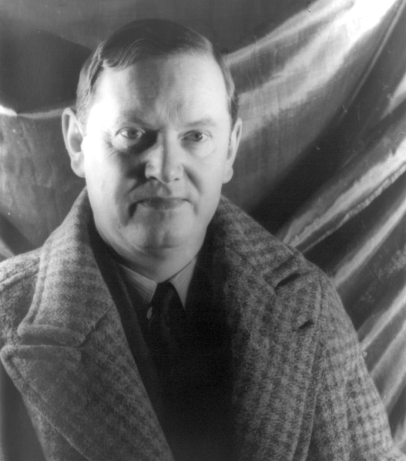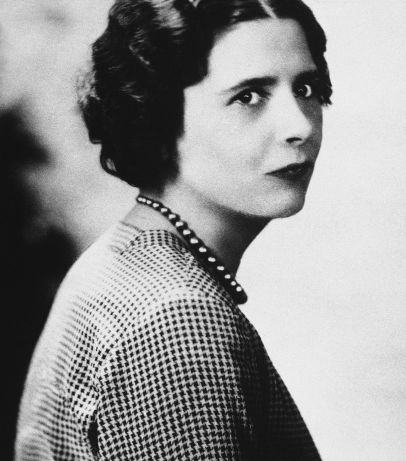Coming from pretty humble origins - being the only child of a postman and seamstress - it’s unlikely that Ernst Friedrich Christoph “Fritz” Sauckel, ever imagined, while a child, that he would grow up to be a slave owner. Presumably he never dreamt of such a thing during his adolescence, joining the Merchant Navy aged 15 in 1909 and sailing in Swedish, Norwegian and German ships. He became a first-class sailor - which shows he wasn’t afraid of hard work - rising to the rank of Able Seaman. It was Nazism that made him a slave owner and a criminal.
Veteran Nazi
Unlike many of the Reich’s most senior people, Sauckel did not fight in the First World War: his ship was detained in a French port, and Sauckel himself interned. After his return to defeated Germany, with unemployment rampant in the country, he did what everyone else did: he was a metalworker, fisherman, studied languages, mathematics and economics – he put his hand to a bit of everything. For some time he studied engineering.
However, he did not try too hard because his work in the party, the NSDAP, was too demanding. Sauckel was devoted to the Nazi movement. In 1922, membership in the NSDAP offered no benefits. On top of that, he was also a Sturmabteilung fighter (Sturmabteilung was colloquially called Brownshirts), which at the time resulted in no more than just bruises in brawls with communists. In the same year of 1922, he became party leader, first at the city and then at the regional level in Thuringia.
Fritz Sauckel was one of the very first Nazis – his membership number is 1395
Sauckel was very proud of this past. He always wore his major honours: the “Honour Chevron for the Old Guard”, a special decoration which distinguished the oldest members of the SS, and the “Coburg Badge”, the first badge of honour recognised as a national award of the Nazi Party, awarded personally by Adolf Hitler to commemorate the Battle of Coburg.
Only those members of the SS who had joined the NSDAP during the “struggle period”, that is, even before the President of the German Reich, Field Marshal Paul von Hindenburg, appointed Adolf Hitler as German Reich Chancellor on 30 January 1933, had the right to wear the "Old Guard Chevron" on their sleeve. And the “Coburg Badge” commemorated the day on 14 October 1922 when Adolf Hitler and 650 Stormtroopers arrived in Coburg in a special train for the “German Day”. The same left-wingers greeted them there with hostility, so the fights were serious. In "Mein Kampf", Hitler called the event a turning point in his political career.
General Plenipotentiary for Labour Deployment
After the Nazis came to power in 1933, Sauckel was promoted to Obergruppenführer in the SA and SS and became a member of the Reichstag for Thuringia, and at the same time, Reichsstatthalter of Thuringia, in effect the region’s imperial viceroy.
His career progressed well from there and in 1934 he was promoted to SS-Gruppenführer. But the biggest leap in his career was on 27 February 1942, when Sauckel assumed the post of Commissioner of Labour in the Office of the Reich's Four-Year Plan. A month later, on 21 March, he became General Plenipotentiary for Labour Deployment (Generalbevollmächtigter für den Arbeitseinsatz) for the use of all German manpower. This offered Sauckel brilliant prospects: direct access to the Reich's leading figures and even influence on the army. The Blitzkrieg in the East had failed and a long, exhausting war began, in which manpower played no less a role than the Wehrmacht. And Hitler granted Sauckel the authority to give orders also to the military structures.
It is generally believed that Sauckel was brought to the very top by Albert Speer, a technocrat and war economy reformer. But there is another point of view which seems closer to the truth. Sauckel was appreciated by Martin Bormann, who remembered how much Fritz had done for the beloved party. However, Speer was also generally pleased with Sauckel. It was only later, in the memoirs written in Spandau where he was serving his sentence that Speer remarked: “I must share the responsibility for Sauckel’s dire labour policies”.
Ostarbeiters, Slaves of the Reich
It is a well-known fact that almost all of Europe worked for Germany during the war: what was then Czechoslovakia is but one example. After the occupation, the country’s most famous factories – "Skoda", "ČKD", "Poldi", "Zbrojovka" –started to work diligently for the Nazis. They supplied Germany with small arms, armoured vehicles, self-propelled guns, aircraft, cars, ammunition and parts for V-2 rockets.
The entire German economy also worked at full capacity for the war. At the beginning of the Second World War, the Germans were confident that they could manage on their own. But the longer the confrontation on the Eastern Front lasted, the more obvious the problem of labour shortages became.
According to archival data, the mass transfer of people to Germany began in the spring of 1942. Adolf Hitler instructed Sauckel to provide manpower for the Third Reich and he immediately presented the Führer with a “Labour Mobilisation Programme”. In the first year, the Third Reich was to receive 1.6 million workers from the Eastern Territories alone. Hitler approved the programme, and Sauckel even exceeded the plan: in the first year, more than 1.8 million people were transferred from the Soviet Union to Germany.
The programme originally envisaged that men and women aged between 17 and 35 were to be “recruited”. However, as it later turned out, in reality even children were transferred to Germany.
“All the men must be fed, sheltered and treated in such a way as to exploit them to the highest possible extent at the lowest conceivable degree of expenditure”, Sauckel noted three months after his appointment, in May 1942.
Appetites grew, new numbers kept coming down to the lower levels of Sauckel's office, and the count was in the millions. “The labour supply for German agriculture, and likewise for the most urgent armament production programmes ordered by the Führer mean it is essential 1 million women and men are imported from the Eastern Territories within the next four months”, Sauckel demanded on 17 March 1943. “Starting 15 March the daily shipment must have reached 5,000 each of female and male workers, and beginning of April this number has to be stepped up to 10,000. This is a requisite of the most urgent programmes, and the spring tillage, and other agricultural tasks are not to suffer for the detriment of the nutrition and of the armed forces”.
‘They Are Catching Humans as Dogcatchers Used to Catch Dogs’
Of the 5 million people taken to Germany during World War II, as admitted by Sauckel, only 200,000 were volunteers, and the rest were simply caught and brought to the Reich by force. The number of volunteers in the occupied territories was very small, and after Stalingrad, there were none at all. Therefore, on the orders of Sauckel, the Nazis rounded up people right on the streets.
The transfer and enslavement of Soviet citizens had reached unprecedented levels; Thomas Dodd of the American prosecution noted at the Nuremberg trials: “On the 5 October 1942, for example, the Defendant Sauckel wrote to the Defendant Rosenberg, stating that 2 million foreign labourers were required and that the majority of these would have to be drafted from the recently occupied Eastern territories and especially from the Ukraine.
“Sauckel's office sent out circulars to captured towns and villages with quotas for transporting people to the Third Reich. Local collaborators drew up lists. Mass raids were then carried out. At times entire families were rounded up; relations were separated from one another to different parts of Germany. People were put into freight wagons like cattle, regardless of the weather, and taken to the Reich.”
In a dispatch to Sauckel dated 21 December 1942, Reich Minister for the Occupied Eastern Territories Rosenberg quoted the letters of the deported to their loved ones: “On 5 October some people from the Kowbuski district were scheduled to go, but they did not want to and the village was set on fire. They threatened to do the same thing in Borowyischi, as not all who were scheduled to depart wanted to go. Thereupon three truckloads of Germans arrived and set fire to their houses. In Wrasnyischi 12 houses and in Borowyischi three houses were burned. (…)You cannot imagine the bestiality. (…) The order came to supply 25 workers, but no one reported. All had fled. Then the German police came and began to ignite the houses of those who had fled. The fire burned furiously, since it had not rained for two months. In addition, the grain stacks were in the fawn yards. You can imagine what took place. The people who had hurried to the scene were forbidden to extinguish the flames, were beaten and arrested, so that seven homesteads were burned down. The policemen meanwhile ignited other houses. (…) The workers who had not yet appeared by then were to be shot. All schools were closed and the married teachers were sent to work here, and the unmarried ones went to work in Germany.
“They are now catching humans as the dogcatchers used to catch dogs. They have already been hunting for one week and have not yet enough. The imprisoned workers are locked in the schoolhouse… cannot even perform natural functions, but have to do it like pigs in the same room.
“People from many villages went on a certain day to a pilgrimage to the Pochayiv Monastery. They were all arrested, locked in, and will be sent to work. Among them, there are lame, blind, and aged people”.
But even these methods were not effective enough. Sauckel came up with new measures, which Dodd called “grotesque” and “abominable”.
“So I have even proceeded to employ and train a whole staff of French and Italian agents of both sexes who for good pay, just as was done in olden times for ‘shanghaiing’ (a common practice in the 19th century of kidnapping people to serve as sailors by tricking them on board and then setting sail, Ed) go hunting for men and dupe them, using liquor and persuasion to dispatch them to Germany,” Sauckel admitted openly on 1 March 1944 at a meeting of the Central Planning Board.
Working ‘Cattle’ of the German Economy
After the people were unloaded from the trains, they were sent to a labour exchange which resembled a slave market.
There were times when they were bought in bulk - it all depended on the future owner's pocket. This is from memories: “One by one the respectable gentlemen approached our line. They looked closely at us, selecting the toughest, strongest ones. They checked our muscles, peered intently into our mouths, and talked about something, without regard for our feelings.
“I was short and frail, and I was left among a dozen similarly unsold weaklings. But the tall customer in the worn jacket looked at us dismissively, said something under his breath, and went into the office to pay the money – for all in bulk”.
The fate of the slaves varied: a diligent master saw to it that the workers were fed, so that the “working cattle” did not die ahead of time. But some were no different from the guards in the concentration camps: whipping, feeding with food waste and other abuses were commonplace. Ostarbeiters (literally Eastern worker, ie slave) could also be taken to a large forced labour camp, which worked for a German factory or plant. The young were often taken to work for large German companies such as Siemens, Opel and others. This meant camp regime, barracks life, solitary confinement in case of any misconduct, and arduous labour from whistle to whistle.
Foreign workers were forced to arm their country's enemies and even take part in hostilities. “We have made a request for an order that a certain percentage of men in the anti aircraft artillery must be Russians”, Field Marshal Erhard Milch, who oversaw the development of the Luftwaffe, said at a meeting of the Central Planning Board on 19 February 1943. “Fifty thousand will be taken altogether; 30,000 are already employed as gunners. It is an amusing thing that Russians must work the guns”.
Fritz Sans Sentimentality
On 6 October 1945, under interrogation in Nuremberg prison, Alfred Rosenberg claimed that he did not like Sauckel's methods, but he could not object – Sauckel was doing the Führer's bidding:
“I regretted that the demands of Sauckel were so urgent that they could not be met by a continuation of voluntary recruitments, and thus I submitted to the necessity of coercion. (…) I could not [suggest to Sauckel that forced recruiting programme be abandoned] because the numbers or allotments that Sauckel had received from the Führer to meet were absolutely binding for him, and I couldn't do anything about that.”

At the Nuremberg trials, Sauckel tried to deny the fact that he had created and managed a slave economy. He persisted, arguing about the “labour watch”, which had “nothing to do with exploitation”. He called forced labour “the normal economic process”. The son of a postman and seamstress turned out to be a perfect watchdog of the vast plantation called the Third Reich.
One of Sauckel's speeches in Weimar displays a peculiar technocracy and, at the same time, Nazism:
“Even the effort of a machine is conditioned by the amount of fuel, skill and care given to it. How many more conditions must be considered in the case of men, even of low kind and race, than in the case of a machine!”
Sauckel liked to couple his cruel orders with the phrase of “faux-sentimentality”, which should not interfere with carrying out the task. He was a straightforward man; to hang out the sadistic slogan "Work sets you free" ('Arbeit Macht Frei') over the gates of the concentration camps would never occur to the former seaman.
In his address to the International Military Tribunal at Nuremberg, he described himself as a simple working man, an idealist and a patriot who did his duty honestly. He never understood what he was guilty of or why he was in the dock.
EXHIBIT
The labour force brought into the Reich was divided into several categories, in line with Nazi racial theory.
1. “Fremdarbeiters” (foreign workers) – from Denmark and Norway, later from Italy.
2. “Zwangsarbeiters” (forced workers). These include:
Militärinternierte (military internees) – prisoners of war from European countries
Zivilarbeiter (civilian workers) – from the rest of Europe, mainly Poland.
3 “Ostarbeiters” (Eastern workers) – from the republics of the Soviet Union. They were systematically used as free labour force and usually lived in special camps under guard.
By Pyotr Romanov, Daniil Sidorov
























